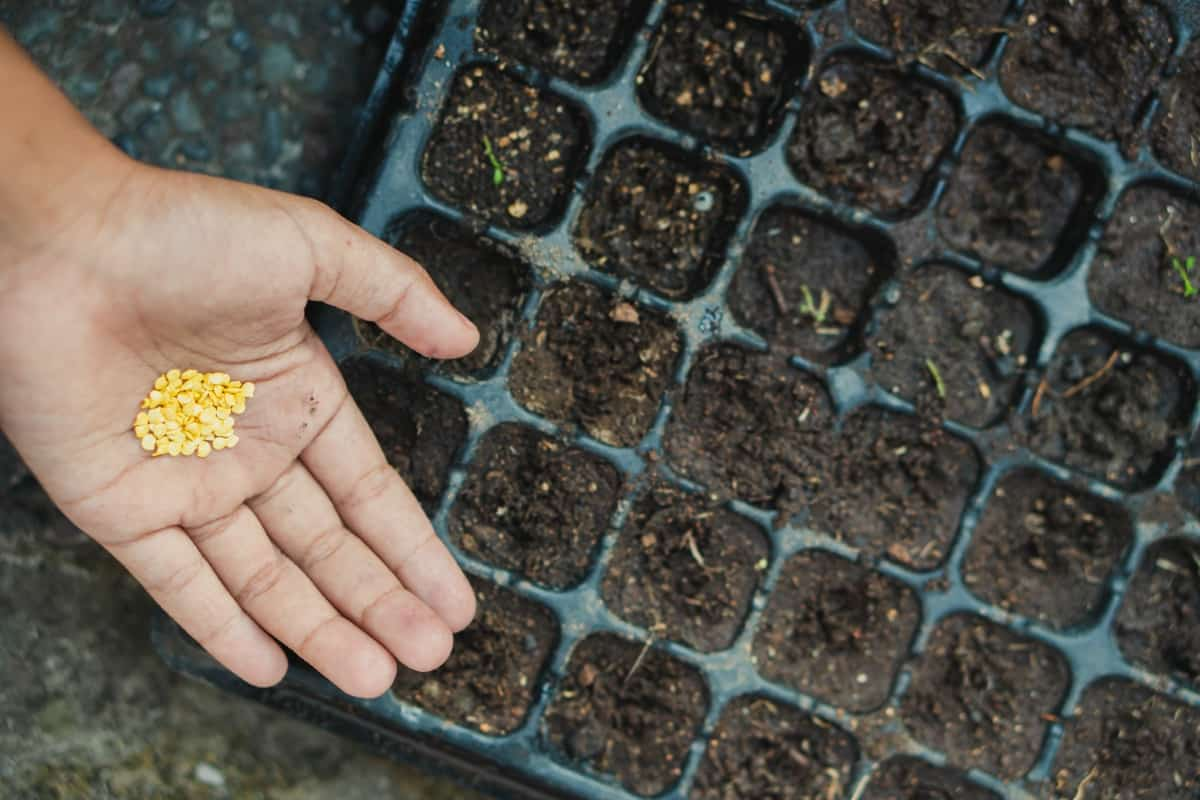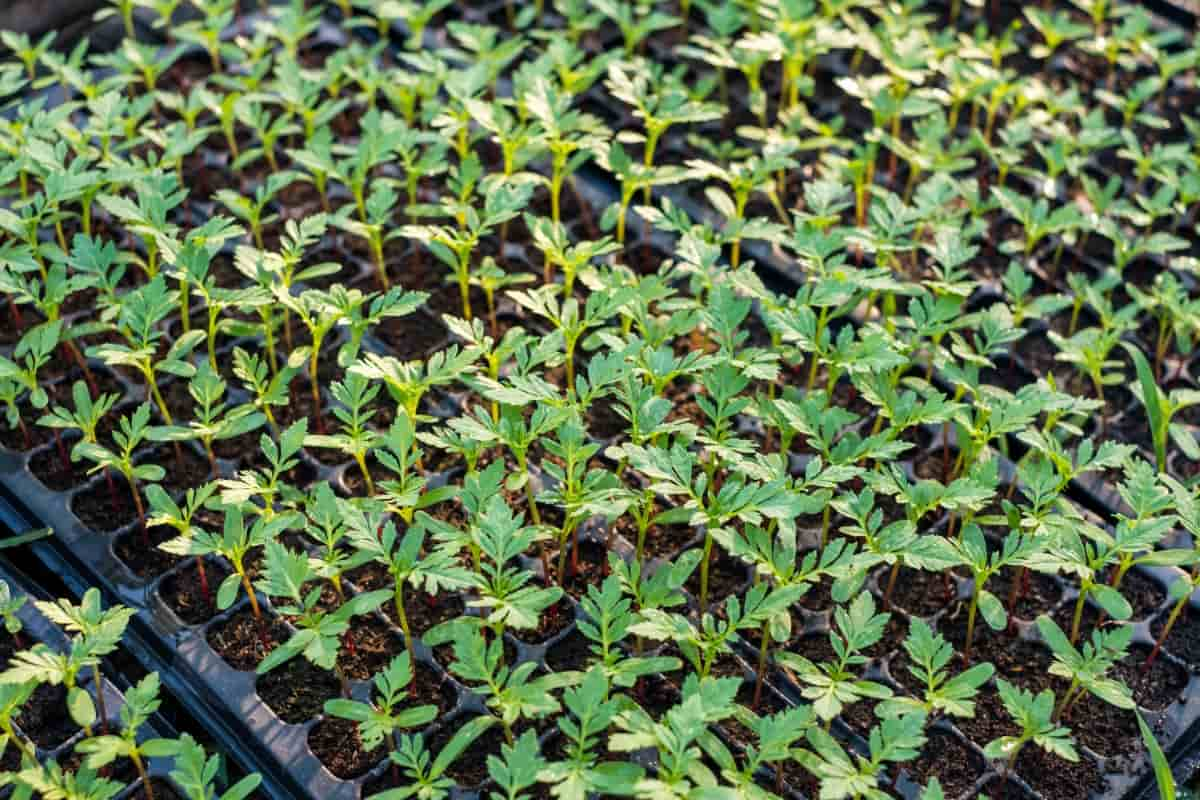Growing flowers from seeds is an enriching and rewarding experience. This article serves as a guide, focusing on the flower seed germination chart, an essential tool for gardeners. It provides insights into the germination time and temperature requirements for various flowers, offering a clear understanding of the process.

Whether dealing with perennial or annual species, the chart is invaluable for achieving successful germination. Let’s delve into the fundamentals of flower seed germination, covering aspects like temperature, soil moisture, light exposure, and more, all presented in simple, easy-to-understand language.
Flower Seed Germination Chart
Understanding the Basics of Flower Seed Germination
Flower seed germination is the process where seeds develop into new plants. This journey begins when the seed is exposed to suitable conditions, triggering growth. Each flower type has specific needs, outlined in the flower seed germination chart. This chart is a helpful reference for gardeners to understand the basic requirements for different flower seeds, including germination time and temperature. It’s crucial to familiarize oneself with these basics to ensure a successful start to the life of your flower plants.
Optimal Temperature for Germination
The flower seed germination temperature chart is a key guide for gardeners. Temperature plays a critical role in germination. Most flower seeds require specific temperature ranges to begin the germination process. This chart helps in determining the ideal temperature settings for different flower seeds, ensuring they receive the warmth needed to sprout successfully. It’s a vital tool to avoid guesswork and achieve optimal growth conditions.
Importance of Soil Moisture and Preparation
Soil moisture and preparation significantly influence seed germination. The right soil moisture level is crucial for seeds to absorb water, swell, and break dormancy. It’s important to maintain consistent moisture without overwatering, as this can lead to seed rot. Preparing the soil by ensuring it’s loose, well-draining, and nutrient-rich creates the perfect environment for seeds to germinate and thrive. Adequate soil preparation lays the foundation for robust plant development.
Seed Stratification: Its Role in Germination
Seed stratification is a process used to simulate natural conditions that seeds need to germinate. Several perennial flower seeds need a cold treatment period to end their dormancy. This process involves exposing seeds to cooler temperatures before planting, mimicking winter conditions. Stratification can be crucial for germination success in certain flower species, as outlined in the perennial flower seed germination chart. Understanding and applying this technique can significantly improve germination rates.
In case you missed it: 10 Steps for Planting Canna Lilly Seeds: Exploring Seed Germination to Care

Germination Timeframes and Factors Influencing Them
The seed germination time chart provides valuable information on the time it takes for different flower seeds to germinate. This timeframe can vary widely among species and is influenced by factors like temperature, soil quality, and moisture levels. Knowing the expected germination time helps gardeners plan and manage their planting schedule effectively. It’s important to consider these factors to ensure that seeds have the best chance of sprouting within the expected timeframe.
Light Exposure: Its Impact on Flower Seed Germination
Light exposure plays a pivotal role in the germination of flower seeds, with some seeds necessitating light for the process, while others thrive in darkness. The flower seed germination chart often indicates the light requirements for each type of seed. Adequate light exposure, whether direct or indirect, can significantly influence the success of germination. Understanding and providing the right light conditions is essential for healthy seed development.
Germination Inhibitors and How to Avoid Them
Germination inhibitors are factors that can prevent or delay seed germination. These include incorrect temperature, excessive moisture, poor soil conditions, and lack of light. Being aware of these inhibitors is crucial for successful germination. The flower seed germination chart can serve as a guide to avoid these pitfalls. Gardeners can enhance seed germination success by establishing favorable conditions and minimizing inhibitory factors.
Practical Tips for Successful Flower Seed Germination
To achieve successful flower seed germination, consider these practical tips: follow the guidelines provided in the flower seed germination chart, maintain consistent soil moisture without overwatering, prepare the soil properly, provide the correct temperature and light conditions, and be patient. Different seeds have varying germination times and requirements. Keeping track of these and adjusting care accordingly can lead to a flourishing flower garden. Remember, successful germination is the first step towards a beautiful and vibrant garden.
In case you missed it: From Seed to Sprout: 10 Best Essential Tips for Seed Sowing

Monitoring and Documenting Germination Progress
Keeping a close eye on the germination process is crucial for any gardener. Monitoring involves regularly checking the seeds for signs of sprouting and ensuring they are in optimal conditions, as indicated by the seed germination chart. Documenting progress can be as simple as keeping a garden journal.
Note down key factors like the date of planting, types of seeds, their respective germination times, and observed growth stages. This record-keeping helps in understanding the germination patterns and adjusting care routines if needed. It also serves as a valuable reference for future gardening endeavors. Regular monitoring and thorough documentation can significantly enhance the understanding and success of the germination process.
Common Problems Encountered During Germination and How to Troubleshoot
During germination, gardeners often face several challenges. Common problems include seeds not sprouting within the expected timeframe, mold growth due to excessive moisture, or seeds drying out. To troubleshoot, first, refer to the flower seed germination time and temperature charts to ensure all conditions are met. If seeds are slow to germinate, check if they require specific treatments like stratification or scarification. For mold issues, improve air circulation and reduce watering frequency. If seeds are drying out, ensure consistent soil moisture without overwatering.
Chart for Flower Seed Germination
| Flower | Germination Temperature (°F) | Germination Time (Days) |
| Marigold | 70-75 | 5-7 |
| Sunflower | 70-80 | 6-10 |
| Petunia | 75-80 | 7-14 |
| Pansy | 65-75 | 5-10 |
| Zinnia | 70-85 | 5-7 |
| Snapdragon | 65-75 | 7-14 |
| Cosmos | 70-85 | 7-14 |
| Morning Glory | 65-75 | 5-7 |
| Poppy | 55-65 | 7-14 |
| Lavender | 60-70 | 14-30 |
| Aster | 65-70 | 8-10 |
| Bachelor’s Button | 60-70 | 7-10 |
| Black-Eyed Susan | 70-75 | 7-10 |
| Calendula | 70-75 | 5-15 |
| Carnation | 65-70 | 5-7 |
| Columbine | 65-70 | 15-30 |
| Coneflower | 65-70 | 10-15 |
| Dahlia | 70-75 | 5-7 |
| Daisy | 65-70 | 10-15 |
| Delphinium | 60-68 | 14-21 |
| Foxglove | 65-70 | 14-21 |
| Gaillardia | 70-75 | 7-14 |
| Geranium | 70-75 | 7-14 |
| Hollyhock | 60-70 | 10-14 |
| Impatiens | 70-75 | 10-21 |
| Larkspur | 55-65 | 15-20 |
| Lupine | 55-65 | 14-21 |
| Nasturtium | 55-65 | 10-14 |
| Nicotiana | 70-75 | 10-14 |
| Ornamental Pepper | 65-70 | 10-15 |
In case you missed it: How to Propagate Brussels Sprouts from Seeds: Sprouting Techniques

Conclusion
Understanding the specifics of flower seed germination, including temperature, time, and other growth factors, is key to successful gardening. This comprehensive guide and chart offer valuable insights for gardeners to nurture a vibrant and flourishing flower garden.
- Feed Your Flock for Less: Top 10 Tips to Save on Chicken Feed
- Ultimate Guide to Ossabaw Island Hog: Breeding, Raising, Diet, and Care
- Hatching Answers: The Top 10 Reasons Your Chickens Aren’t Laying Eggs
- Eggs and Economics: Breaking Down the Cost of Raising Backyard Chickens
- Defend Your Greens: Proven Methods to Keep Iguanas Out of Your Garden
- Ultimate Guide to Cinnamon Queen Chicken: A Comprehensive Guide for Beginners
- Ultimate Guide to California Tan Chicken: Breeding, Raising, Diet, Egg-Production and Care
- Ultimate Guide to Marsh Daisy Chicken: Breeding, Raising, Diet, and Care
- 10 Types of Chicken Farming Businesses You Can Start for Profits